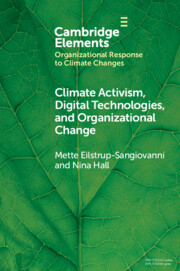Element contents
Climate Activism, Digital Technologies, and Organizational Change
Published online by Cambridge University Press: 12 December 2024
Summary
- Type
- Element
- Information
- Online ISBN: 9781009483544Publisher: Cambridge University PressPrint publication: 02 January 2025
References
- 1
- Cited by

